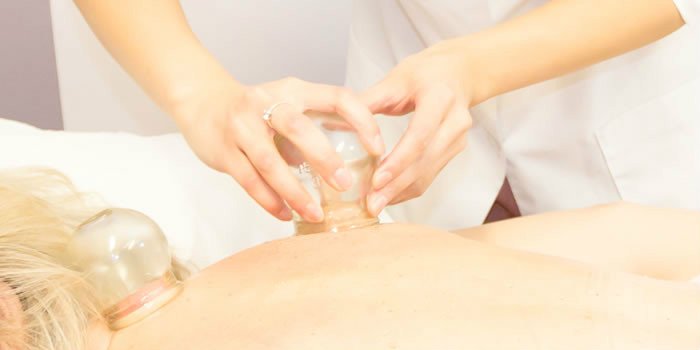Hijama, also known as cupping therapy, is an ancient healing practice that has been used for centuries in various cultures, including Arabic, Chinese, and Egyptian traditions. In recent years, this therapy has gained popularity worldwide, especially in the Middle East and other parts of the world, as a natural remedy for a range of ailments. Hijama involves the use of cups to create suction on the skin, stimulating blood flow, and promoting healing. In this article, we will explore the history, benefits, and modern-day applications of Hijama Cupping Therapy in Dubai.
What is Hijama Cupping Therapy?
Hijama is a form of alternative medicine that involves the placement of cups on the skin to create suction. The cups are typically made from glass, bamboo, or silicone and are applied to specific areas of the body where there is pain or congestion. The suction can be achieved by either using a pump or by heating the air inside the cups, which creates a vacuum effect.
The therapy can be classified into two types: dry cupping and wet cupping. Dry cupping involves the suction alone, while wet cupping combines the suction with a slight incision to the skin, allowing for the removal of small amounts of blood. Wet cupping is believed to help expel toxins and stagnant blood from the body, further promoting detoxification and healing.
The Science Behind Hijama Cupping Therapy:
Modern research into cupping therapy has started to shed light on how it works and why it might be beneficial. The primary mechanism behind cupping therapy is the increased circulation it promotes. The suction created by the cups helps to improve blood flow in the areas where the cups are applied. This can bring oxygen and nutrients to tissues that may have been deprived, speeding up the healing process.
The suction can also stimulate the lymphatic system, which is responsible for removing toxins and waste products from the body. By promoting lymphatic drainage, cupping can help to detoxify the body and reduce inflammation.
Additionally, cupping therapy is thought to trigger the nervous system, leading to the release of endorphins, which are the body’s natural painkillers. This may explain why cupping therapy is often used for pain management and the treatment of muscle soreness.
Health Benefits of Hijama Cupping Therapy:
Hijama cupping therapy offers a wide range of potential health benefits, making it a popular treatment for a variety of ailments. Some of the most commonly reported benefits include:
1. Pain Relief:
One of the primary reasons people turn to cupping therapy is for pain relief. Whether it’s chronic pain, muscular pain, or joint pain, cupping therapy can help alleviate discomfort by improving circulation and relaxing tight muscles. It is often used to treat conditions such as back pain, neck pain, headaches, and arthritis.
2. Detoxification:
The process of wet cupping, where blood is drawn out of the body, is thought to help eliminate toxins, waste products, and stagnant blood. This cleansing process can help restore balance and promote overall well-being.
3. Improving Digestion:
Cupping therapy can also be beneficial for digestive issues. By stimulating the digestive organs, cupping may help relieve symptoms such as indigestion, bloating, and constipation. It can also be helpful in promoting the flow of bile, which aids in digestion.
4. Stress Relief and Relaxation:
Many people find cupping therapy to be deeply relaxing. The process encourages deep relaxation and helps relieve stress and anxiety by improving blood flow to the muscles and calming the nervous system. This can lead to a general feeling of well-being and tranquility.
5. Skin Health:
Cupping therapy can have a positive effect on the skin by improving circulation to the treated area. This increased blood flow can promote healing in conditions like acne, eczema, and cellulite. Some also use cupping to address facial rejuvenation and to reduce the appearance of wrinkles.
6. Respiratory Health:
In Traditional Chinese Medicine, cupping is commonly used to treat respiratory issues such as asthma, bronchitis, and coughs. The therapy helps clear congestion, improve airflow, and reduce inflammation in the lungs, leading to easier breathing.
Modern Applications and Popularity of Hijama:
Today, Hijama cupping therapy has made a resurgence as people seek natural, holistic approaches to health. It is practiced widely in the Middle East, Asia, and increasingly in Western countries, where it is often offered as part of wellness clinics or alternative medicine centers.
In Dubai, Hijama is a popular treatment, and many clinics offer both dry and wet cupping as part of their therapeutic offerings. Individuals seeking relief from chronic pain, stress, or detoxification often turn to Hijama as a natural and non-invasive treatment option.
Hijama has also gained attention from athletes and fitness enthusiasts who use it to relieve muscle soreness, improve performance, and speed up recovery. Many athletes have shared their positive experiences with cupping therapy, contributing to its growing popularity in the wellness community.
Is Hijama Cupping Therapy Safe?
While Hijama cupping therapy is generally considered safe when performed by trained professionals, it is essential to seek treatment from a certified practitioner. Improper use of the cups or unhygienic conditions can lead to side effects such as bruising or skin infections.
Individuals with certain medical conditions, such as bleeding disorders, skin conditions, or pregnancy, should avoid cupping therapy or consult a healthcare provider before undergoing the treatment.
Conclusion:
Hijama cupping therapy is a time-honored treatment with a range of potential health benefits. From pain relief and detoxification to stress reduction and improved circulation, this ancient practice continues to be a valuable option for those seeking natural healing solutions. As more people seek alternatives to conventional medicine, Hijama cupping is likely to remain an important therapeutic tool for modern ailments, providing a link to the past while offering relief in the present.





Comments